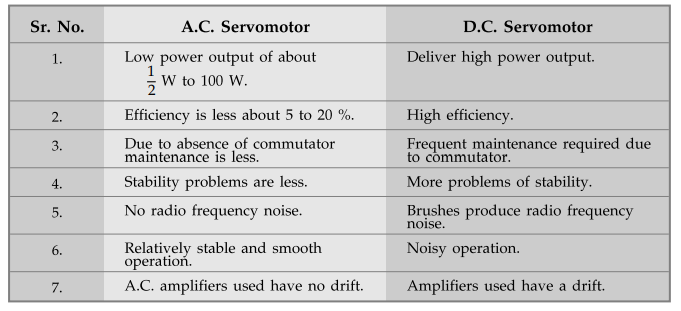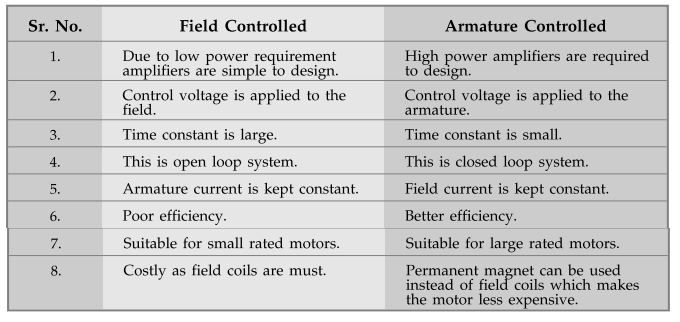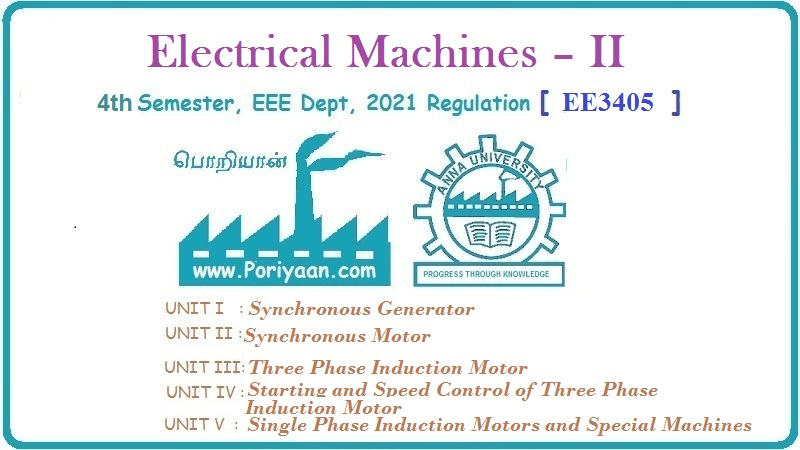Electrical Machines II: UNIT V: b. Special Machines
Comparison of Servomotors
1. Comparison between A.C. and D.C. Servomotor, 2. Comparison between Armature Controlled and Field Controlled D.C. Servomotors
Comparison of Servomotors
1. Comparison between A.C. and D.C. Servomotor
A.C. Servomotor
1.
Low power output of about 1 / 2 W to 100 W.
2.
Efficiency is less about 5 to 20 %
3.
Due to absence of commutator maintenance is less.
4.
More problems of stability.
5.
Brushes produce radio frequency noise.
6.
Relatively stable and smooth operation.
7. A.C. amplifiers used have no drift.
D.C.Servomotor
1.
Deliver high power output.
2.
High efficiency.
3.
Frequent maintenance required due to commutator.
4.
Stability problems are less.
5.
No radio frequency noise.
6.
Noisy operation.
7.
Amplifiers used have a drift.

2. Comparison between Armature Controlled and Field Controlled D.C. Servomotors
Field
Controlled
1.
Due to low power requirement amplifiers are simple to design.
2.
Control voltage is applied to the armature.
3.
Time constant is small.
4.
This is open loop system.
5.
Armature current is kept constant.
6.
Poor efficiency.
7.
Suitable for small rated motors.
8.
Costly as field coils are must.
Armature
Controlled
1.
High power amplifiers are required to design.
2.
Control voltage is applied to the field.
3.
Time constant is large.
4.
This is closed loop system.
5.
Field current is kept constant.
6.
Better efficiency.
7.
Suitable for large rated motors.
8.
Permanent magnet can be used instead of field coils which makes the motor less
expensive.

Review Questions
1. Compare a.c. and d.c. servomotors.
2. Compare armature controlled and field controlled d.c.
servomotors.
Electrical Machines II: UNIT V: b. Special Machines : Tag: Engineering Electrical Machines - II : - Comparison of Servomotors
Related Topics
Related Subjects
Electrical Machines II
EE3405 Machine 2 EM 2 4th Semester EEE Dept | 2021 Regulation | 4th Semester EEE Dept 2021 Regulation
